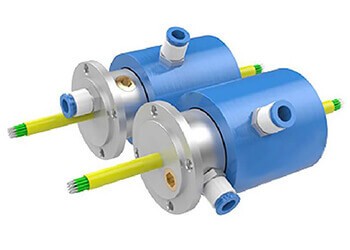Breaking Barriers of Connectivity: Empowering Hobbyists with Custom-Built Slip Ring Solutions.
In the world of do-it-yourself (DIY) projects, creativity knows no bounds. From homemade robots to custom lighting systems, hobbyists and enthusiasts continue to push the boundaries of what they can accomplish. When it comes to achieving seamless power and data transmission in rotating systems, DIY slip ring connectors emerge as an exciting solution. Join us as we dive into the world of DIY slip ring connectors, empowering makers to unleash their creativity and tackle complex connectivity challenges.
Slip ring connectors are widely used in industries ranging from robotics and aerospace to wind turbines and surveillance systems. They enable the transfer of electrical signals and power between stationary and rotating parts, ensuring continuous communication. While commercial slip ring connectors are readily available, the DIY community has embraced the challenge of creating their own customized solutions.
The concept of a DIY slip ring connector involves constructing a functional connector using readily available materials and basic electronic components. Makers harness their creativity, technical skills, and problem-solving abilities to design and build a slip ring connector that meets their specific project requirements.
The allure of DIY slip ring connectors lies in their versatility. Hobbyists can tailor the connector’s size, number of circuits, and even material choices to fit their unique projects. Whether it’s a small-scale robotics project or a custom lighting installation, DIY slip ring connectors offer the freedom to design a solution that precisely matches the desired specifications.
Building a DIY slip ring connector requires careful consideration of the key components. The central element is the rotating ring assembly, which typically consists of conductive rings mounted on a spindle. These rings provide the electrical contact points for power and data transmission. Common materials for the rings include brass or copper, which offer good conductivity and durability.
To establish electrical contact between the rotating rings and the stationary part, brushes or contacts are needed. These components press against the rotating rings and ensure a continuous electrical connection. Brushes made of conductive materials such as graphite or carbon are commonly used in DIY slip ring connectors. The selection of suitable brushes is crucial to achieving stable and reliable contact.
Wire connections play a vital role in completing the circuit between the brushes and the rest of the system. Hobbyists can use insulated wires of appropriate gauge and quality to connect the brushes to the desired electrical components. Attention to detail is essential during the wiring process to ensure proper insulation and secure connections.
In addition to the core components, DIY enthusiasts often incorporate additional features to enhance the functionality and aesthetics of their slip ring connectors. This may include the integration of mounting brackets, protective casings, or even customized 3D-printed parts. The possibilities are limited only by the maker’s imagination and resourcefulness.
It’s important to note that DIY slip ring connectors may have limitations compared to their commercial counterparts. Factors such as wear resistance, electrical performance, and overall durability may vary depending on the quality of materials and construction methods used. Hobbyists should carefully assess the specific requirements of their projects and determine if a DIY solution will suffice or if a commercial slip ring connector is a better fit.
Despite their potential limitations, DIY slip ring connectors offer an exciting avenue for makers to explore. They provide an opportunity for hands-on learning, problem-solving, and the satisfaction of creating a customized solution. DIY enthusiasts can embrace the challenge of designing, building, and fine-tuning their slip ring connectors to meet the unique demands of their projects.
Online communities, forums, and tutorial resources provide invaluable support for those embarking on DIY slip ring connector projects. Makers can find inspiration, guidance, and shared experiences from fellow DIY enthusiasts who have successfully built their own connectors.
In conclusion, DIY slip ring connectors offer an exciting opportunity for makers and DIY enthusiasts to tackle complex connectivity challenges in rotating systems. By harnessing their creativity, technical skills, and resourcefulness, hobbyists can design and construct custom slip ring solutions tailored to their unique projects. DIY slip ring connectors empower individuals to break barriers, expand their knowledge, and unleash their creativity in the world of seamless power and data transmission.
See What We Can Do

